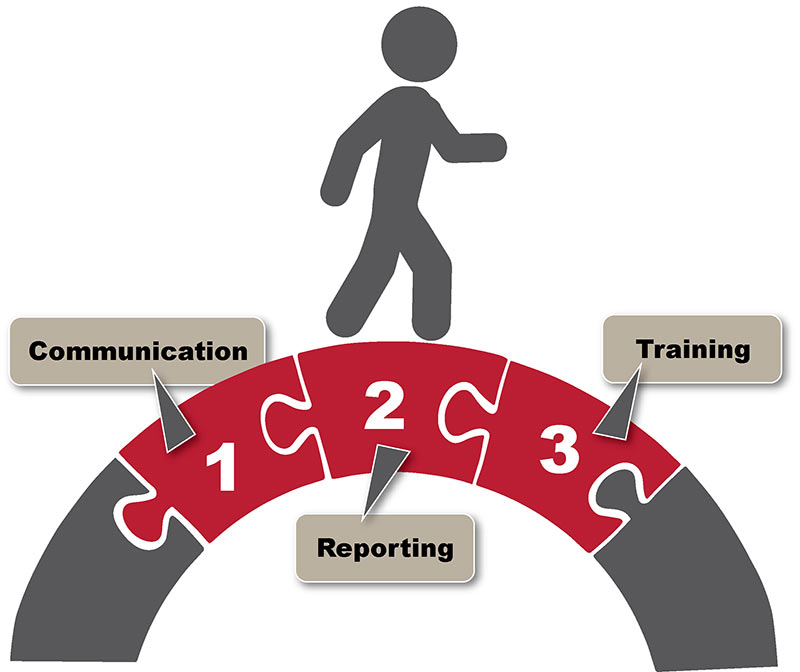The end-of-year gift processing and reporting season is over, and most advancement offices are gearing up for spring solicitations and appeals. Now is a good time to review advancement’s strategic priorities and evaluate departmental effectiveness. One critical but often overlooked aspect in achieving a successful fundraising program is the relationship and interaction between gift officers and operations staff.
The ecosystem of frontline fundraisers and operations staff is one of interdependence and, ideally, of cooperation and collaboration. While gift officers interact directly with donors and strive to build lasting relationships to garner support for the organization’s mission, operations staff are the gatekeepers of valuable data and ensure proper processes and procedures for data accuracy. As the roles of the different advancement positions vary, figuring out how to build lasting partnerships between operations staff and frontline fundraisers is key to the success of advancement programs.
Previous studies demonstrate that operations professionals’ opinions about their work and their engagement as strategic partners were more favorable than their frontline fundraising colleagues’ views. The gap between the groups, and often between perception and reality, makes partnerships more challenging.
A disconnect between frontline fundraisers and operations staff has far-reaching implications.
- Outdated information in the database. Through engaging with donors, gift officers are the main source of information for the advancement office. They are privy to address changes, marriages and divorces, job promotions and changes, and other donor information that should be tracked in the database. Inadequate training and knowledge about how to update and track data impedes the maintenance of an accurate database.
- Mistrusting the database. Outdated information in the database also breeds mistrust in the integrity and authenticity of the database. Gift officers will be reluctant to take the extra step to update the database if they believe that the content of the database is already inaccurate. Instead of resorting to one central point to find donor data, gift officers maintain their own spreadsheets and documents outside of the database.
- Unmet needs. Lack of communication and understanding of gift officers’ needs hampers operation staff’s ability to produce valuable reports and effective policy and procedures. Frequently, reports or mailing lists have to be recreated multiple times in order to meet the specifications of gift officers. This will ultimately lead to frustration for both parties.
While these challenges have negative consequences on the operations of a fundraising department, there are some implementable suggestions to bridge the gap between the two groups.
Three Areas for Bridging the Gap Between Gift Officers and Operations Staff

Communication
Advancement leadership should work to close the gap between user expectations and understanding of operations’ outcomes and deliverables. This will involve an emphasis on redefining the relationship between the operations team and frontline fundraisers as strategic partners. The operation team’s involvement and integration with the frontline team’s program is critical to understanding the impact of program strategy on operations functions. This will give advancement in-depth knowledge of how it can provide strategic data for decision-making. Additionally, advancement leadership should establish routine communications channels with gift officers through informal tactics, such as unceremonious inquiry of each gift officer’s satisfaction levels, and formal approaches, such as surveys.
Accessible Reporting
Advancement leadership should ensure all team members know and understand reporting resources available to them, while operations staff can work to develop even better self-service tools for users. Since only a fraction of gift officers are trained to use advanced reporting tools, the operations team should partner with central IT to expand self-service and other reporting tools. This can include implementing a data warehouse to support an expanded reporting environment, acquiring data visualization tools that are easy to navigate, and developing a plan to train team members on their use.
Training
Advancement leadership should first adopt a new training philosophy that focuses on identifying gift officer business needs and then adjusting and devising a new curriculum to meet those needs. An evaluation of current resources (manuals, videos, etc.) against post-training surveys needs to occur to ensure a proper feedback loop. Trainers also need to understand the advancement programs and processes contained in training sessions. Where missing, trainers need to seek and gain the knowledge necessary to convincingly train others on these processes as they relate to technology, data, and reporting details. Advancement leadership also needs to allocate more of its team members toward the effective training of others. While not all team members will be adept at training (and help desk triage), all team members should be trained to provide support to their colleagues.
Creating an environment where frontline fundraisers and advancement operations staff are in sync with each other can enable more dynamic fundraising efforts and increased results. A more cohesive and integrated relationship between operations and fundraising staff will generate better use and maintenance of the database, as well as targeted reporting and dashboards that better meet the needs of the advancement office.




